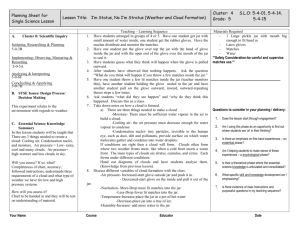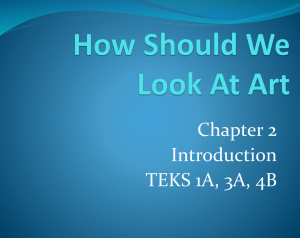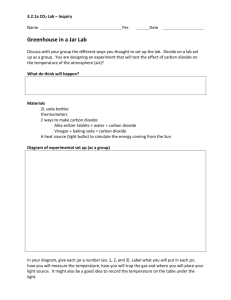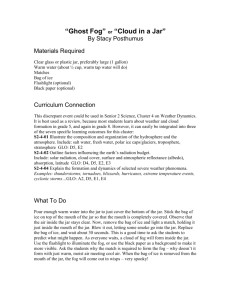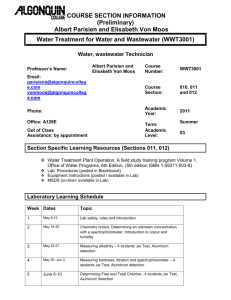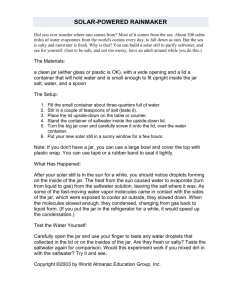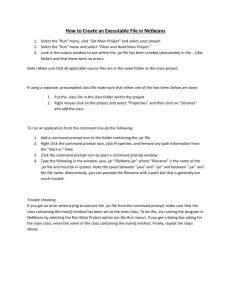Cloud in a Bottle - Discrepant Event
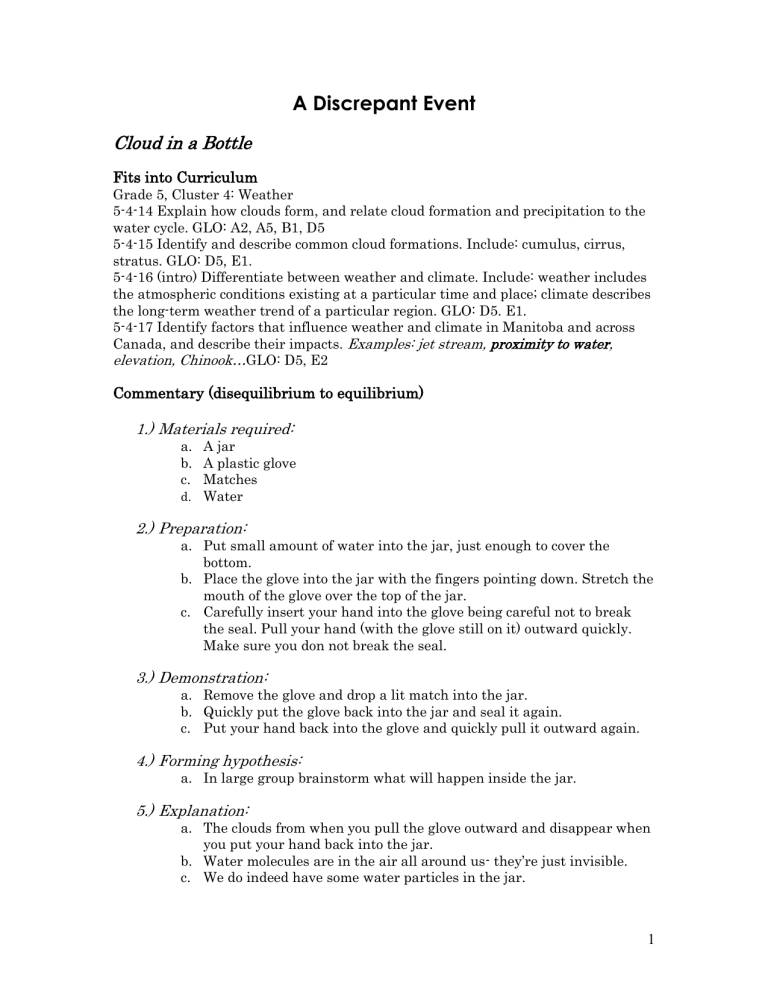
A Discrepant Event
Cloud in a Bottle
Fits into Curriculum
Grade 5, Cluster 4: Weather
5-4-14 Explain how clouds form, and relate cloud formation and precipitation to the water cycle. GLO: A2, A5, B1, D5
5-4-15 Identify and describe common cloud formations. Include: cumulus, cirrus, stratus. GLO: D5, E1.
5-4-16 (intro) Differentiate between weather and climate. Include: weather includes the atmospheric conditions existing at a particular time and place; climate describes the long-term weather trend of a particular region. GLO: D5. E1.
5-4-17 Identify factors that influence weather and climate in Manitoba and across
Canada, and describe their impacts. Examples: jet stream, proximity to water, elevation, Chinook… GLO: D5, E2
Commentary (disequilibrium to equilibrium)
1.) Materials required: a.
A jar b.
A plastic glove c.
Matches d.
Water
2.) Preparation: a.
Put small amount of water into the jar, just enough to cover the bottom. b.
Place the glove into the jar with the fingers pointing down. Stretch the mouth of the glove over the top of the jar. c.
Carefully insert your hand into the glove being careful not to break the seal. Pull your hand (with the glove still on it) outward quickly.
Make sure you don not break the seal.
3.) Demonstration: a.
Remove the glove and drop a lit match into the jar. b.
Quickly put the glove back into the jar and seal it again. c.
Put your hand back into the glove and quickly pull it outward again.
4.) Forming hypothesis: a.
In large group brainstorm what will happen inside the jar.
5.) Explanation: a.
The clouds from when you pull the glove outward and disappear when you put your hand back into the jar.
b.
Water molecules are in the air all around us- they’re just invisible.
c.
We do indeed have some water particles in the jar.
1
d.
When you pull the glove outwards you make more room in the jar and the air in the jar has more room to expand. This process causes the air and water particles in the jar to cool slightly.
e.
When the air cools, the water particles begin sticking to each other
(just like the formation of clouds).
f.
The smoke particles, being solid, act as a nucleus allowing the water molecules to bunch together more easily.
6.) Further examples: Atmosphere in a jar
7.) Materials required: a.
A jar b.
Water c.
Clamp d.
Bunsen burner
8.) Preparation: a.
Put small amount of water into the jar. b.
Clamp jar. c.
Light Bunsen burner d.
Place jar over Bunsen burner until water begins to boil.
9.) Demonstration: a.
Heat the jar until the water begins to boil. b.
Cool until back at room temperature.
c.
Repeat as required.
10.) Explanation: a.
Molecules at this state are moving at a various speeds, for the most they are moving at a medium speed, moving around the jar. b.
As the molecules begin to heat they start to move faster, causing them to “zoom” out of jar into form of water vapour. c.
Cool the jar of water and the molecules return to their original speed continue to cool and they will eventually move so slow that instead of bouncing off each other they stick together forming ice particles.
2
Bloom’s Taxonomy Five Questions For Discussion (reinforcement of principles)
1.) Knowledge : Write out the materials needed and how they form into cloud.
List the three common formations of clouds.
2.) Comprehension: If clouds are made up of water molecules why does it not rain every time there are clouds visible in the sky? Explain your answer, ensuring you refer to the water cycle.
3.) Application: We know that water molecules are ever present in the atmosphere, when we get a sun- shower in the summer are clouds present?
Explain?
4.) Analysis: When watching the national weather report each night why does it rain more often in Vancouver than Winnipeg?
5.) Synthesis: Make a chart using the capitol cities of each province and territory. Using C for cloudy and L for clear, chart which cities will receive more precipitation than the other. Rank the cities in order of most probable precipitation levels.
6.) Evaluation: Create a diagram of the water cycle incorporating seasonal differences and which types of precipitation are expected during the four seasons in Manitoba.
Sources
Homemade Clouds in a Bottle from http://www.spartechsoftware.com/reeko/Experiments/ExpCloudsInBottle.htm
retrieved on Sept. 26, 2005
3

